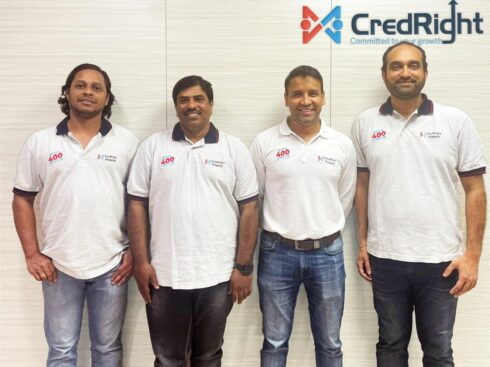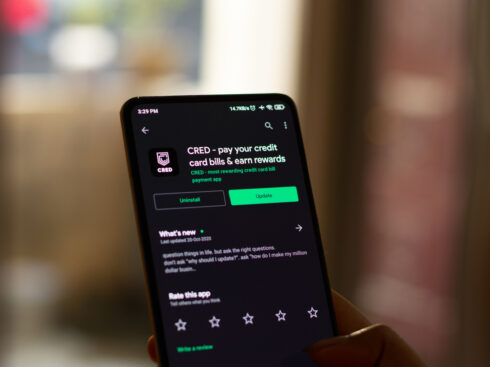
SUMMARY
As Per The New Directives, P2P Lending Platforms Need To Have At Least $307K In Funds
After over a year of deliberations and discussions, the RBI has finally released the official guidelines for non-banking financial companies (NBFCs) engaged in P2P lending in the country. In a draft, titled “Non-Banking Financial Company – Peer to Peer Lending Platform (Reserve Bank) Directions, 2017”, the central banking institution has specified a list of directions pertaining to the registration and operation of NBFC-P2Ps.
Currently, at a nascent stage, the P2P lending landscape in India is poised to grow into a $4 Bn-$5 Bn industry by 2023. The domain’s origin actually dates back to 2012, when the first peer-to-peer lending company i-Lend was launched. At present, the P2P lending space is populated by more than 30 players including Faircent, LendBox, LenDenClub, IndiaMoneyMart, Monexo, Rupaiya Exchange, LoanBaba, CapZest, i2iFunding and many more.
Speaking about the directions, which are effective immediately, Rajat Gandhi, founder of Faircent and Chairman of the P2P lending subcommittee of IAMAI’s FinTech committee told Inc42, “The resolution is an extremely positive step for the P2P lending business, and we are confident that the guidelines will help the sector in realising its immense potential and ensure easy and faster access of credit to the needful.”
Let us look at the key takeaways before delving further into each section:
So, What Exactly Is P2P Lending?
P2P lending is a type of debt financing that allows individuals as well as businesses to borrow money online, without having to rely on an official financial institution as an intermediary. In its 2016 “Consultation Paper on Peer to Peer Lending,” RBI defines P2P lending as a form of crowdfunding that entails issuing unsecured loans to borrowers via an online portal.
It is important to note here that not all crowdfunding activities belong to the category of P2P lending. The former basically refers to a process, in which people from different regions come together, often via an online platform like Kickstarter and Indiegogo, to raise money that eventually goes into funding a project, startup or any other kind of commercial endeavour. In peer-to-peer funding, on the other hand, borrowers confer with individual lenders directly to acquire personal as well as business loans.
At present, the entire gamut of P2P lending is handled by specialised online platforms that match lenders with borrowers based on their needs and demands. Because these companies operate online at low overheads, P2P lending promises higher returns for lenders as well as substantially lower interest rates for borrowers than traditional banking institutions.
Scope Of Activities And Restrictions
In the newly-released paper, the RBI has intended the following services that a peer-to-peer lending company should partake in:
- An NBFC-P2P will act as an intermediary providing an online marketplace or platform to the participants involved in peer to peer lending
- Will ensure adherence to legal requirements applicable to the participants as prescribed under relevant laws
- Will store and process all data relating to its activities and participants on hardware located within India
- Will undertake due diligence on the participants
- Will undertake credit assessment and risk profiling of the borrowers and disclose the same to their prospective lenders
- Will be required to acquire prior and explicit consent of the participant to access its credit information
- Will undertake documentation of loan agreements and other related documents
- Will provide assistance in disbursement and repayments of loan amount
- Will render services for recovery of loans originated on the platform.
The limitations placed on peer-to-peer lending portals include:
- An NBFC-P2P cannot lend on its own
- It cannot provide or arrange any credit enhancement or credit guarantee
- It cannot facilitate or permit any secured lending linked to its platform; i.e. only clean loans will be permitted
- It cannot hold, on its own balance sheet, funds received from lenders for lending, or funds received from borrowers for servicing loans; or such funds
- It cannot cross-sell any product except for loan specific insurance products
- It cannot permit international flow of funds
P2P Lending Platforms And The NBFC Status
In a recent Gazette notification issued by the central government, the RBI classified P2P lending platforms as a subset of the NBFC (non-banking financial companies) category. As per the report, the move was aimed at bringing these platforms under the purview of the RBI under the RBI Act.
For the uninitiated, an NBFC is a company registered under the Companies Act, 1956. According to the directions, a non-banking financial company is engaged in the business of loans and advances, acquisition of shares, stock, bonds hire-purchase, insurance business and chit business.
In the notification, the central government recognised P2P lending startups as vital players working to promote financial inclusion in the country. Additionally, the announcement is aimed at helping these startups raise organised funding efficiently.
Commenting on the development, Brahma Mahesh Khaderbad, co-founder and CEO of FinMomenta had said at the time, “The most awaited Gazette notification from Govt. of India notifying that non-banking companies that carry business of peer-to-peer lending companies to be NBFCs is welcome. This gazette will pave way for RBI to notify regulations that were awaited by the P2P lending Industry. This move will bring legality and credibility to the platforms like us who are facilitating loans on the platform for borrowers who don’t have access to formal financial Institutions.”
Eligibility Criteria And Process Of Registration
According to RBI’s directions, all existing and prospective NBFC-P2Ps will be required to submit an application for registration to the Department of Non-Banking Regulation, Mumbai. The bank in question, after being satisfied that all the conditions are fulfilled, will then grant an in-principle approval for setting up and operating a P2P lending platform in the country.
The validity of the in-principle approval issued by the bank will be twelve months from the date of granting such in-principle approval. Within the period of twelve months, the company will be required to develop the technology platform as well as submit all other legal documentations. For existing companies, the RBI has stipulated a period of 3 months for registration.
For P2P lending companies to be eligible for registration, it:
- Will need to obtain a Certificate of Registration (hereinafter referred to as “CoR”) from the bank
- Will have to be incorporated in India
- Should have the necessary technological, entrepreneurial and managerial resources to offer such services to the participants
- Should have the adequate capital structure to undertake the business of peer to peer lending Platform
- Should have qualified promoters and directors to manage the company
- Will need to submit a plan for a robust and secure Information Technology system
- Should submit a viable business plan for conducting the business of peer to peer lending
Prudential Norms
To ensure that P2P lending platforms have enough “economic skin” in the game, the RBI has mandated a $307K (INR 2 Cr) capital requirement for these companies. Additionally, NBFC-P2Ps will be required to:
- Maintain a leverage ratio of 2 to prevent these platforms from expanding indiscriminately.
- Ensure that the aggregate exposure of a lender to all borrowers at any point of time across all P2Ps does not exceed $15,351 (INR 10 Lakh).
- Ensure that the aggregate loans taken by a borrower at any point of time across all P2Ps remain less than $15,351 (INR 10 Lakh).
- Ensure that the exposure of a single lender to the same borrower across all P2Ps does not exceed $767.5 (INR 50,000).
- Ensure that the maturity of the loans does not exceed 36 months.
- Obtain a certificate from the borrower or lender, as applicable, that the limits prescribed above are being adhered to.
Escrow Accounts And Fund Transfer

To reduce the threat of money laundering, the RBI has put restrictions on the way funds are transferred between P2P lenders and borrowers. As per the directives, all borrowing-lending transactions will take place via direct bank-to-bank transfers.
Cash transaction is strictly prohibited. Furthermore, fund transfer between the participants on the P2P lending platform will need to be through escrow accounts operated by a trustee.
According to the newly-issued draft, at least two escrow accounts, one for funds received from lenders and pending disbursal, and the other for collections from borrowers, will have to be maintained. The trustee shall mandatorily be promoted by the bank maintaining the escrow accounts.
The Role Of Credit Bureaus In Due Diligence
So far, scant information about the borrower’s credit history has facilitated the sheltering of defaulting borrowers. Even when a person fails to pay the EMIs on time, his/her credit score remains the same. This is because credit rating bureaus currently do not track data from unorganised sectors like peer-to-peer lending.
The implementation of regulations, the RBI believes, will help bring alternative lending practices under the purview of mainstream credit bureaus. With more efficient tracking of borrower behaviour, the task of identifying and penalising defaulters will also become easier. Consequently, the process of loan recovery will also become smoother and more efficient.
To protect the lender’s money, the Reserve Bank of India has mandated that NBFC-P2Ps will have to work collaboratively with Credit Information Corporations (CICs), The platforms will also be required to submit data (including historical data) to the bureaus. As per the directions, a peer-to-peer lending company shall:
- Keep the credit information (relating to borrower transactions on the platform) maintained by it, updated regularly on a monthly basis or at such shorter intervals as may be mutually agreed upon between the NBFC-P2P and the CICs
- Take all such steps which may be necessary to ensure that the credit information furnished by it is up to date, accurate and complete
- Include necessary consents in the agreement with the participants for providing the required credit information
Transparency And Disclosure Requirements
Up until now, lending companies often withheld important details about the borrowers, be it individuals or businesses. The only information usually available to investors is the industry that the loan-seeking business belongs to. In large ticket-size investments, this becomes a problem, as many lenders would like to conduct their own due diligence on the business they are pouring money into.
In this direction, the country’s central banking institution has made it mandatory for NBFC-P2P companies to carry adequate disclosure. The transparency and disclosure requirements as specified by the RBI are as follows:
- An NBFC-P2P will have to disclose details about the borrower/s including personal identity, required amount, interest rate sought and credit score to the lender.
- Lender should also be provided with details about all the terms and conditions of the loan, including likely return, fees and taxes
- The platform will need to share details about the lender/s including proposed amount, interest rate offered but excluding personal identity and contact details to the borrower
Furthermore, the platform will be required to publicly disclose the following details on its website:
- Overview of credit assessment/score methodology and factors considered
- Disclosures on usage/protection of data
- Grievance redressal mechanism
- Portfolio performance including share of non-performing assets on a monthly basis and segregation by age
- Its broad business model
The RBI On Fair Practices Code
The Reserve Bank of India has also listed a series of fair practices that are aimed at ensuring good customer experience. Following are some of these guidelines that the RBI has specified:
- An NBFC-P2P will be required to obtain explicit affirmation from the lender stating that he/she has understood the risks associated with the proposed transaction and that there is no guarantee of return and that there exists a likelihood of loss of entire principal in case of default by a borrower. Furthermore, the platform will not provide any assurance for the recovery of loans.
- In the matter of recovery of loans, NBFC-P2Ps need to ensure that the staff are adequately trained to deal with the participants in an appropriate manner and shall not resort to harassment viz; persistently bothering the borrowers at odd hours, use of coercion for recovery of loans, etc.
- The platform shall ensure that any information relating to the participants received by it is not disclosed to any third party without the consent of the participants.
- The Board of Directors will also provide periodic review of the compliance of the Fair Practices Code and the functioning of the grievances redressal mechanism at various levels of management.
Customer Interface And Grievance Redressal

As per the directions, a proper grievance redressal mechanism should be in place to deal with complaints from both lenders and borrowers. The RBI further specified:
- Complaints should be handled/disposed of by NBFC-P2Ps within a stipulated time and in the manner as provided for in its board approved policy, but in any case not beyond a period of one month from the date of receipt.
- At the operational level, NBFC-P2Ps need to display the following information prominently, for the benefit of participants, on the website: the name and contact details of the Grievance Redressal Officer who can be approached for resolution of complaints.
- If the complaint /dispute is not redressed within a period of one month, the participant may appeal to the Customer Education and Protection Department of the Bank.
Tech Support, Data Security And Business Continuity Plan
P2P lending companies currently serve as the tech layer between borrowers and lenders. One of the reasons the RBI has released regulations for the peer-to-peer lending industry in India is to mitigate the risk of cyber breaches. With the rise of fintech, more and more financial transactions are occurring online.
In most cases, fledgling P2P lending platforms do not have sufficient resources to ensure the security of customer information against hackers. Outlining the cybersecurity risks associated with Internet-based lending, the RBI has stated:
- There should be adequate safeguards built in its IT systems to ensure that it is protected against unauthorized access, alteration, destruction, disclosure or dissemination of records and data.
- An NBFC-P2P should have a Board approved Business Continuity Plan in place for safekeeping of information and documents and servicing of loans for full tenure in case of closure of platform.
- Information System Audit of the internal systems and processes should be in place and should be conducted at least once in two years by CISA certified external auditors. Report of the external auditor shall be submitted to the Regional Office of the Department of Non-Banking Supervision of the Bank.
- There shall be reasonable arrangements in place to ensure that loan agreements facilitated on the platform will continue to be managed and administered by a third party in accordance with the contract terms, if the NBFC-P2P ceases to carry on the P2P activity.
The State Of P2P Lending In India
The origin of P2P lending in India can actually be traced back to 2012 when Shankar Vaddadi and his team established i-Lend. The appeal of P2P lending lies in its convenience and efficiency. By eliminating the need for intermediaries, social lending platforms manage to offer high returns on investments as well as low-interest rates for borrowers, irrespective of market conditions. Currently worth $3.2 Mn (INR 20 Cr), the country’s peer-to-peer lending industry is projected to increase to around $4 Bn-$5 Bn by 2023, Plunge Daily reports.
Realising the sector’s growing potential, the RBI has long been deliberating over the need for regulations within the P2P lending space. To that end, the country’s chief banking institution released a consultation paper on peer-to-peer lending in April 2016.
In July, it was reported that the RBI had finalised norms for peer to peer (P2P) lending platforms, which were expected to be released in two to three weeks. Later in the second week of July, it was reported that the RBI is averse to the idea of P2P platforms offering a first loan default guarantee (FLDG) to institutional lenders. The FLDG is the way microfinance institutions and NBFCs in India protect the lender’s interest, especially in cases of default. Under the FLDG security cover, lenders can ask for collaterals as a way of safeguarding their money.
A month later, the central banking institution is reportedly looking to allow players in this segment to operate in the offline space as well. The move, sources believe, is aimed at facilitating financial inclusion in the country. According to one source, the decision to permit offline P2P lending activities is modeled after the structure of chit fund companies. The move could ultimately facilitate peer-to-peer transactions, especially for users without proper access to online platforms in rural and semi-urban areas.
Speaking about the newly-finalised directives, Brahma Mahesh Khaderbad, FinMomenta co-founder and CEO added, “The master directions from RBI in regard to regulating Peer to Peer lending platforms as NBFC-P2P are on expected lines. RBI has clearly focussed on ensuring that P2P lending goes a long way with these directions and has kept the interests of lenders and borrowers in mind. The regulations are welcome and I believe that this will pave way for P2P platforms to gain legality, transparency and credibility. The regulatory requirements like capital and BCP etc will ensure that only serious players would take part in the business. While there is no clarity on information exchange and control mechanism to limit lender and borrower to the caps mentioned, I believe that much more clarity will come on these issues in coming days.”
What The Future Holds; What P2P Lending Players Have To Say
According to a report by The Boston Consultancy Group (BCG), the Indian banking system is slated to become the third-largest in the entire world by 2025. Under the Pradhan Mantri Jan Dhan Yojana (PMJDY), more than 225 Mn previously-unbanked people from around the country were offered access to bank accounts by November 2016.
In recent times, the launch of India’s digital stack – Aadhaar, eKYC and digital payment services (including UPI and BHIM) – has paved the way for a fintech reformation that challenges the long-standing monopoly of traditional banking institutions. As claimed by Minister for Electronics and IT, Ravi Shankar Prasad, India’s digitised economy will likely grow three-fold to $1 Tn by 2024 from its current $270 Bn. In fact, India is said to have the greatest market potential in the entire world, as determined by the Harvard Business Review .
Despite phenomenal growth in the fintech sector, alternative lending, in particular P2P lending, remains a relatively young domain. The market is currently marred by a myriad of risks and challenges, chief among which is the dearth of verifiable data. In a country with a population of over 1.31 Bn, only 220 Mn people have PAN cards. Other forms of KYC (know your customer), including voter ID, Aadhaar and ration cards are not considered as the sole identity proof, especially when it comes to financial activities.
This makes the process of borrower’s credit assessment and background verification difficult and unreliable. Awareness in the community about alternative investments is still relatively low. This, in turn, presents a challenge in getting lenders/investors on board. Lack of awareness translates to lack of trust among borrowers, which is also one of the reasons why P2P lending has not yet gained traction in the Indian market.
Talking on the matter, OpenTap co-founder and CEO Senthil Natarajan told Inc42, “The main difference between P2P in India and other countries is that we’re latecomers to the party. P2P lending is still in the nascent stages when compared to many other economies of our size. What may be revolutionary here could well be basic in other parts of the world. Compared to advanced economies, digital penetration is also lower in India.”
The new directives issued by the RBI will likely help bring transparency, credibility and accountability to the still-nascent segment. It will foster trust among both lenders and borrowers, which will, in turn, return the risk of loan delinquencies. While the RBI is justified in instituting restrictions on the scope of activities of peer-to-peer lending platforms, some fear that the norms could be too stringent to facilitate the market’s growth.
In a recent interaction with Inc42, i2iFunding co-founder Raghavendra Singh listed out some of the negatives about the directions instated by the RBI. He said, “It is a defining moment for P2P lending sector in India and will make P2P lending a credible alternative financing option in India. However, there are a few drawbacks and lacunae that need to be addressed. For instance, incumbent P2P players are getting only three months to apply for a license, however new players will get 12 months to set up the business.”
According to Singh, putting a cap on the total investment of a lender will restrict the growth of this sector by preventing HNIs from participating. Furthermore, P2P lending platforms are not allowed to give any kind of credit guarantee, which could restrict P2P players from creating innovative products like principal protection to safeguard investor’s money. He further stated, “More clarification is required on how the execution of agreements between borrowers and lenders will take place, as in 11(1)(ii) clause RBI says that Lender’s personal identity should not be revealed to borrower.”
Reiterating what Singh said, i-Lend founder Shankara Vaddadi added, “There are some areas that require further clarification, specifically, the cap on lenders across P2P lending platforms. That is a very low figure in our opinion. Secondly, the cap on the investment of a single lender to the same borrower is another area that could impede the sector’s growth.”
While the newly-released directions by the RBI come with a lot of positives, how far the drawbacks will affect the fledgling industry’s growth is something that only time will tell.


























